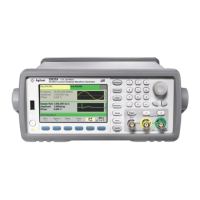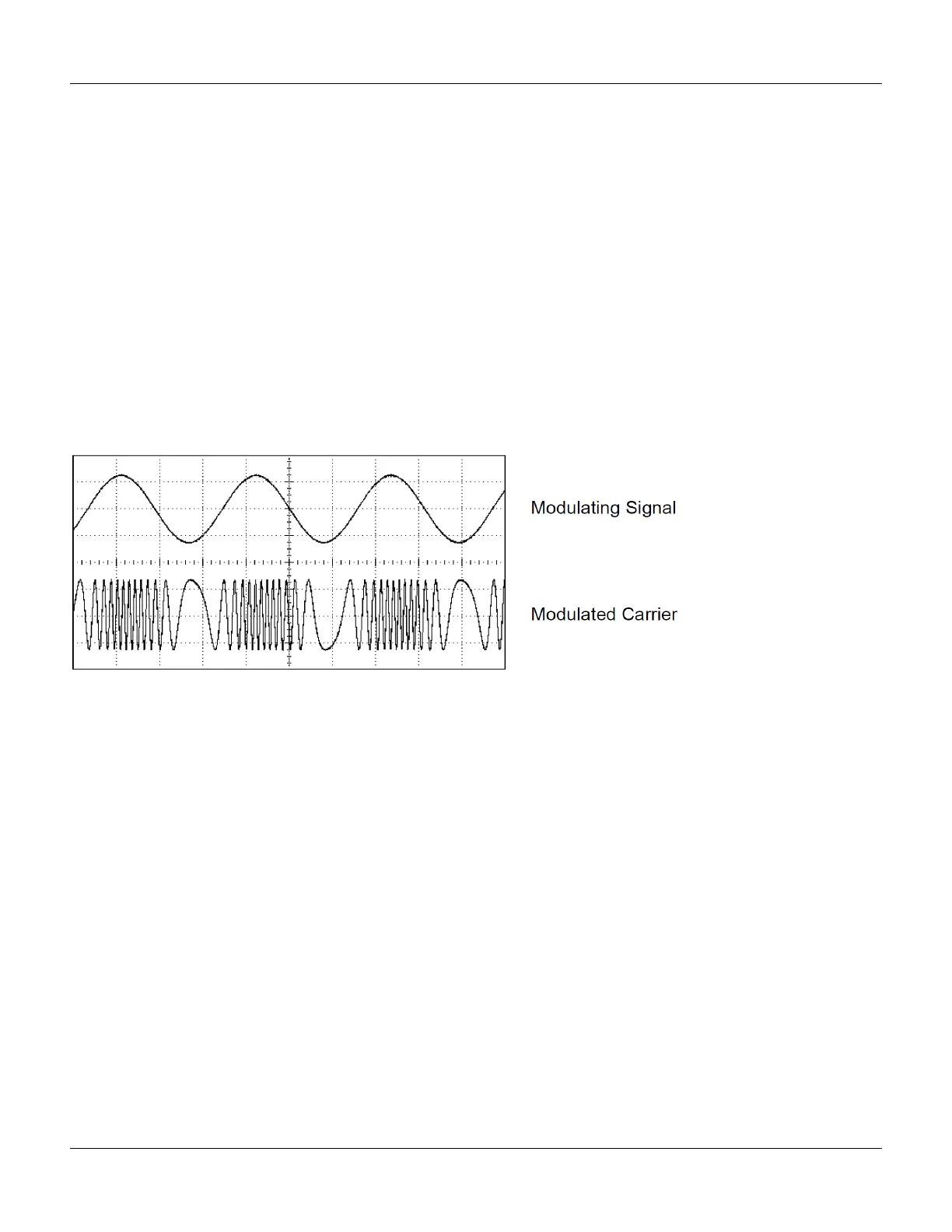Waveform Generation Tutorial
In DSB-SC, the carrier signal is inverted whenever m(t) < 0. For QAM, the second carrier signal would be cos(ω
c
t),
making it 90 degrees out of phase from the first carrier.
Frequency Modulation (FM)
Frequency modulation varies a carrier signal’s frequency according to the modulating signal:
y(t)=A
c
•sin[(ω
c
+d•m(t) )•t]
where m(t) is the modulating signal and d is the frequency deviation. FM is called narrowband if the deviation is less
than 1% of the modulating signal’s bandwidth, and wideband otherwise. You can approximate the modulated signal’s
bandwidth with the following equations.
BW ≈ 2•(Modulating Signal Bandwidth) for narrowband FM
BW ≈ 2•(Deviation+Modulating Signal Bandwidth) for wideband FM
Phase Modulation (PM) PM is similar to FM, but the phase of the carrier waveform is varied, rather than the frequency:
y(t)=sin[ω
c
t+d•m(t) ]
where m(t) is the modulating signal and d is the phase deviation.
Frequency-Shift Keying (FSK)
FSK is similar to FM, except the carrier frequency alternates between two preset values, the carrier frequency and the
hop frequency. Sometimes the hop and carrier frequencies are called "Mark" and "Space," respectively. The rate at
which the switching between these values occurs is determined by an internal timer or the signal on the rear-panel Ext
Trig connector. Frequency changes are instantaneous and phase-continuous.
Agilent 33500 Series Operating and Service Guide 143

